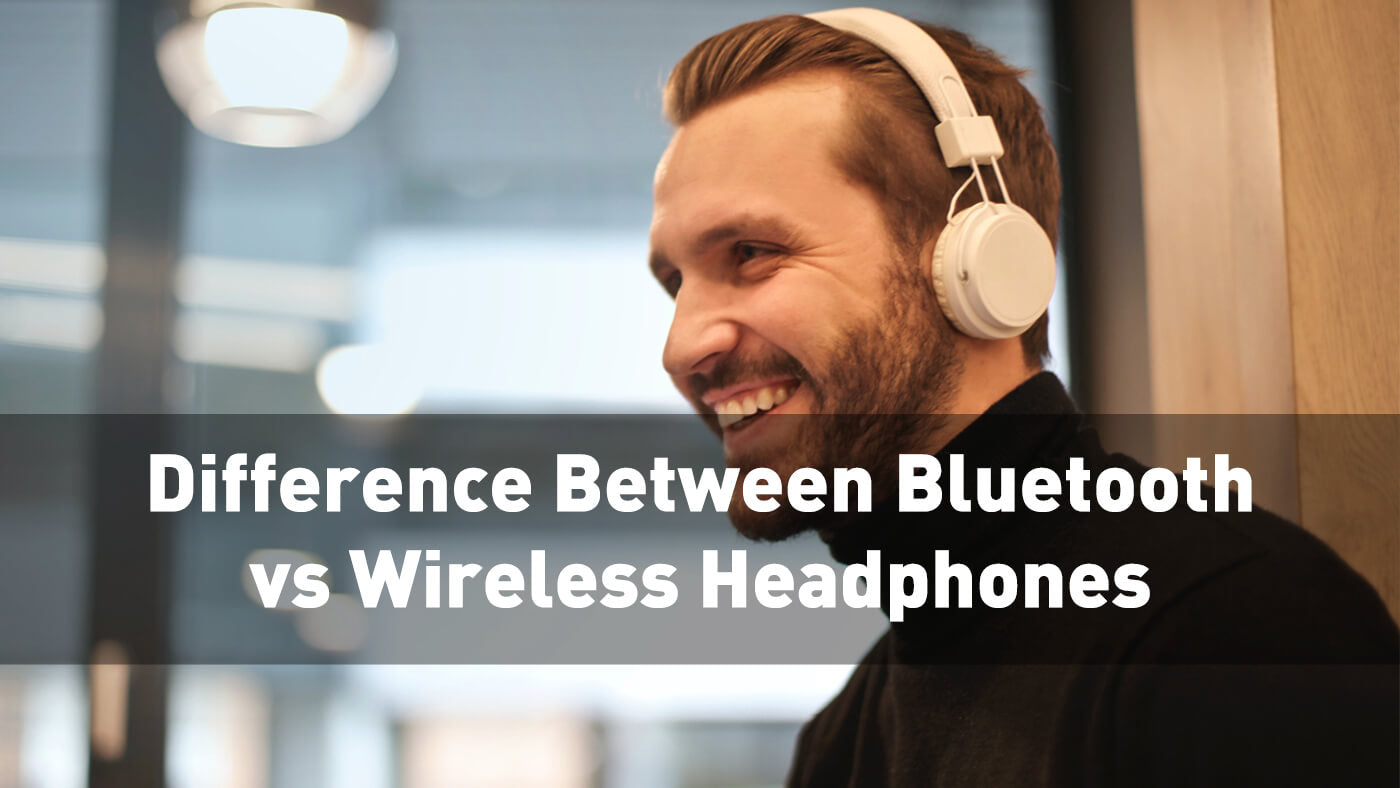There’s a lot of buzz around wireless and “true wireless” earbuds lately. So, what’s the difference? And which one should you buy? In this blog post, we’ll break it down for you so you can make the best decision for your needs. Stay tuned!
What Are Wireless Earbuds?
Wireless earbuds are earphones that connect to your device via Bluetooth. They typically have a cord connecting the earbuds themselves, but no cords connecting them to your phone or other music players. This allows you to move around more freely without being tethered to your device.
In addition, most wireless earbuds come with built-in microphones, so you can use them for hands-free calling. You are still limited by the range of Bluetooth, however, so you’ll need to keep your device within 33 feet of your earbuds. On the plus side, wireless earbuds tend to be less expensive than true wireless earbuds.
What Are True Wireless Earbuds?
True wireless earbuds are a type of wireless earbud that doesn't have a cord connecting the earbuds themselves. Instead, each earbud is completely self-contained.
This allows for an even greater range of motion since you're not limited by a cord connecting the earbuds. True wireless earbuds also come with built-in microphones, so you can use them for hands-free calling.
One downside of true wireless earbuds is that they are often more expensive than regular wireless earbuds. In addition, since each earbud is self-contained, there is a greater risk of losing one. Also, if the battery dies on one earbud, you'll only be able to use the other earbud until it is charged again.
What’s the Difference Between Wireless and True Wireless Earbuds?
Learning the difference between wireless and true wireless earbuds can help you decide which type is best for you. Here’s a quick rundown of the key differences:
Charging Method
Wireless earbuds typically come with a charging case, while true wireless earbuds do not. Instead, each earbud is charged separately. The charging case for wireless earbuds typically holds enough charge for multiple uses, so you can keep them charged and ready to go. The charging case for true wireless earbuds is typically much smaller, and only holds enough charge for one use.
Battery Life
Wireless earbuds typically have a longer battery life than true wireless earbuds. This is because they are not as power-intensive as true wireless earbuds. True wireless earbuds use more power because each earbud is self-contained and has its own battery. The battery life of wireless earbuds typically ranges from 48 hours, while the battery life of true wireless earbuds typically ranges from 24 hours.
Automatic Connectivity
Most wireless earbuds will automatically connect to your device when they are turned on. This is not the case with true wireless earbuds. With true wireless earbuds, you typically have to manually connect each earbud to your device. In addition, if one earbud loses its connection, the other earbud will usually stay connected. This is not the case with wireless earbuds, where both earbuds will lose their connection if one earbud does.
Range
The range of wireless earbuds is typically limited to 33 feet by the Bluetooth connection. The range of true wireless earbuds is not limited by Bluetooth, so you can use them at a greater distance from your device. However, the range will be limited by the battery life of the earbuds. On average, true wireless earbuds have a range of about 30 feet. It’s important to note that obstacles can affect the range of both wireless and true wireless earbuds.
Built-in Smart Assistants
Some wireless earbuds come with built-in smart assistants, such as Siri or Google Assistant. This allows you to use your voice to control your earbuds. True wireless earbuds typically do not come with built-in smart assistants. However, you can usually still use your voice to control your earbuds if you have a smart assistant on your device.
What Are the Pros and Cons of True Wireless Earbuds?
It is important to consider the pros and cons of true wireless earbuds before making a purchase. Here’s a look at the key pros and cons:
Pros of True Wireless Earbuds
Wire-Free
One of the biggest advantages of true wireless earbuds is that they are completely wire-free. This means there are no cords connecting the earbuds to each other or to your device. This makes them extremely portable and easy to use. In addition, it means that you won't have to worry about tangled cords. It will also be easier to keep track of your earbuds since they will each have their own case.
Excellent sound quality
True wireless earbuds have excellent sound quality. This is because they use high-quality components and advanced audio technology. In addition, true wireless earbuds have a more secure fit than wireless earbuds. This helps to isolate the sound and prevent it from leaking out. It also helps to provide a more immersive listening experience. The sound quality of true wireless earbuds is comparable to that of wired earbuds.
Quick Pairing
True wireless earbuds typically have quick pairing. This means that you can connect your earbuds to your device quickly and easily. In addition, true wireless earbuds usually have automatic reconnect. This means that your earbuds will automatically connect to your device when they are turned on. You won't have to go through the pairing process each time you want to use your earbuds.
Charging Case
True wireless earbuds come with a charging case. This is a small case that you can use to charge your earbuds. The charging case typically has a built-in battery. This means that you can charge your earbuds on the go. The charging case is also handy for storing your earbuds when you're not using them. Additionally, the charging case helps to extend the battery life of your earbuds. You can typically get up to three charges from the charging case before it needs to be recharged itself.
Cons of True Wireless Earbuds
Easy To Misplace
One of the biggest disadvantages of true wireless earbuds is that they are easy to misplace. Since they are completely wire free, they can be easy to lose track of. If you're not careful, you may find yourself losing one of the earbuds. This is why it's important to keep track of your earbuds and to always put them back in the charging case when you're not using them.
Requires Regular Charging
Another downside of true wireless earbuds is that they require regular charging. Since the earbuds are completely wireless, they need to be charged regularly. Typically, you will need to charge your earbuds every few hours. This can be a problem if you're using them for long periods. Additionally, if you forget to charge your earbuds, you may not be able to use them.
Bulky Design
True wireless earbuds can have a bulky design. This is because they need to fit the charging case and the batteries. The charging case can be large and difficult to carry. Additionally, the earbuds themselves can be larger than traditional earbuds. This can make them uncomfortable to wear for long periods. On the plus side, the bulky design means that true wireless earbuds are less likely to fall out of your ears. If you're looking for a more compact design, you may want to consider wireless earbuds.
Less Intuitive Playback Controls
True wireless earbuds typically have less intuitive playback controls. This means that it can be more difficult to control the audio on your earbuds. For example, you may have to press a button several times to change the volume. Additionally, true wireless earbuds often have touch-sensitive controls. This can be difficult to use if you're not familiar with the controls. If you're looking for more intuitive playback controls, you may want to consider wired earbuds. But if you don't mind the learning curve, true wireless earbuds can be a great option.
Fairly Expensive
Another disadvantage of true wireless earbuds is that they can be fairly expensive. The price of true wireless earbuds has come down in recent years. However, they are still more expensive than traditional wireless earbuds. If you're looking for a cheaper option, you may want to consider wireless earbuds. But if you're willing to spend a bit more, true wireless earbuds can be a great option.
What Are the Pros and Cons of Wireless Earbuds?
It is good to know the advantages and disadvantages of wireless earbuds before purchasing them. This way, you can decide if the product is right for you. To help you make your decision, here are the pros and cons of wireless earbuds:
Pros of Wireless Earbuds
Freedom of movement
One of the biggest advantages of wireless earbuds is that they allow you to move freely. Since there are no wires, you don't have to worry about them getting tangled or caught on something. This means that you can move around freely without worrying about your earbuds. Additionally, wireless earbuds are typically very lightweight. This means that they are comfortable to wear for long periods.
You don't have to worry about them falling out or feeling uncomfortable. In the end, this freedom of movement is one of the biggest advantages of wireless earbuds.
Affordable
Wireless earbuds are typically more affordable than true wireless earbuds. This is because they don't have all of the extra features that true wireless earbuds have. Additionally, the price of wireless earbuds has come down in recent years. This means that they are more affordable than ever. If you're looking for a cheap option, wireless earbuds are a great choice. On the other hand, if you're willing to spend a bit more, true wireless earbuds can be a better option. No matter what your budget is, there's a good chance that you'll be able to find a pair of wireless earbuds that fits your needs.
Cons of Wireless Earbuds
Battery life drops significantly
Another biggest disadvantage of wireless earbuds is that they have shorter battery life when used wirelessly. This is because wireless earbuds use Bluetooth to connect to your device. Bluetooth uses more power than a wired connection. As a result, your battery will drain faster when you're using Bluetooth. Additionally, wireless earbuds typically have smaller batteries than true wireless earbuds. This means that they will need to be charged more often. If you're looking for a pair of earbuds with long battery life, you may want to consider true wireless earbuds. But if you don't mind charging your earbuds more often, wireless earbuds can be a great option.
Lack of good Sound Isolation
Another disadvantage of wireless earbuds is that they often lack good sound isolation. This means that they won't be able to block out ambient noise as well as wired earbuds. If you're looking for a pair of earbuds that can block out noise, you may want to consider wired earbuds. But if you don't mind the ambient noise, wireless earbuds can be a great option. This is because they are more comfortable to wear for long periods.
Durability
The last disadvantage of wireless earbuds is that they are often less durable than wired earbuds. This is because there are more moving parts in wireless earbuds. For example, the battery is typically located in the earbud itself. This means that it is more likely to break if you drop your earbuds. If you're looking for a pair of earbuds that are built to last, you may want to consider wired earbuds. But if you don't mind replacing your earbuds more often, wireless earbuds can be a great option.
Conclusion
Wireless earbuds have been a popular item this year, and there are many different types available on the market. In this blog post, we’ve looked at the differences between wireless and true wireless earbuds, and we’ve given you some tips on how to choose the right pair for you.
We hope you found this information helpful!



